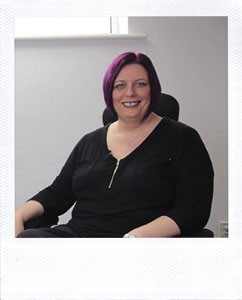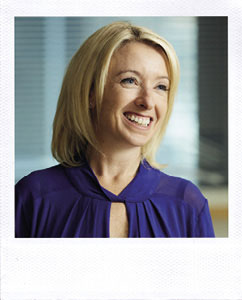 WORKFORCE MANAGEMENT SOLUTIONS PROVIDER’S VIEW
WORKFORCE MANAGEMENT SOLUTIONS PROVIDER’S VIEW
JULIE LOCK,
COMMERCIAL DIRECTOR AT MITREFINCH
In the coming weeks, companies will be tested as they attempt to find the right balance between welcoming employees back to the office and supporting those who continue to work remotely from home. This divide in the workforce poses the question: how can team cultures continue to survive the distance for the foreseeable future? And how can employers make more of an effort to communicate with staff and keep in touch when some companies have teams working both remotely and in the office post-lockdown?
The updated government guidance places responsibility on individual companies to care appropriately for their employees. There are a number of ways that you can welcome people back to the office again in a safe and organised manner, ensuring that all staff feel properly supported.
For example, the government is emphasising the importance of effective ventilation in the workplace. Also, health and safety risk assessments should be updated to include the COVID-19 risks and surfaces should be cleaned regularly alongside the additional hand sanitisation facilities.
Whilst social distancing from people outside of your household is no longer advised, HR teams can still aim to reduce contact between staff by fixing teams (thereby limiting the office numbers), assigning workstations, using screens, staggering working hours and having back-to-back or side-to-side working in place.
Despite all the disruption workers have faced from home during lockdown, it has also granted an unprecedented amount of time to reinvent the working day, with people adopting different schedules, responsibilities and expectations compared to pre-pandemic times.
Another transition period provides the opportunity to really get to know how employees now prefer to work and how they work most productively. A simple anonymous questionnaire sent around to
all employees could provide some valuable feedback for the future of work.
It will be crucial that companies steer clear from the rigid and structured ways of the office that we once all knew, and instead carve out more creative and flexible working practices.
As the stay-at-home message has now been lifted, employers can expect workers to return to work and if this is refused, disciplinary action can be taken. However, HR should try to meet the needs of all employees where possible and organise 1-on-1 meetings first, considering the emotional strain many will be experiencing.
Therefore, it’s important to be open to a more flexible way of work, be that a phased return, temporarily reduced hours, remote or hybrid working, as opposed to rushing staff back to the workplace again.
Equally, you must prepare for hybrid working if this is the next step, with additional resources such as technology and equipment, improved remote working communication channels and employee management. It will be more important than ever for HR teams and line management to be on call to support employee mental wellbeing during this time.
All staff must be updated about health and safety measures that have been implemented to minimise the risk of COVID-19 at work. Additionally, people must be reminded about the mental health support available to them on their return – with any immediate concerns being addressed as a priority.
 WELLBEING EXPERT’S VIEW
WELLBEING EXPERT’S VIEW
LIZ FORTE,
HEALTH & WELLNESS DIRECTOR, EUREST
Sixty-two per cent of the population has felt anxious or worried during COVID-19, according to Mental Health UK, while almost 59 per cent of working women said they feel more prone to extreme levels of stress compared to a year ago (and 44 per cent said their employer had no plan in place to protect them from burnout).
However, by embracing a hybrid office model, employers are gaining an opportunity to reimagine the workplace as a cultural and social environment, inspiring collaboration, creativity and friendships.
This can be supported through the promotion of regular breaks. At Eurest we are firm believers that regular breaks are essential whatever your job. They provide time to de-stress and relax, keep you alert and productive, and support good health and mental wellbeing. In fact, 82 per cent of workers are reported to feel less stressed after a coffee break, with 67 per cent feeling more productive. Although, it is important to remember that employees may not always feel comfortable asking for a break so outwardly expressing support can be key.
Creating comfortable and attractive spaces within a workplace can help to maximise the potential of break times, actively encouraging downtime and socialisation among employees. So, with employees working from home more frequently, why not repurpose any empty desk space for areas geared toward wellbeing? Our survey of nearly 14,000 European workers found that having a workplace restaurant is considered the third most important workplace benefit.
Not only can regular breaks provide time to de-stress, but they can also be a chance to re-fuel. Behavioural psychology teaches us that when healthier food options are readily available, we are more likely to build the habit of eating a balanced diet. Having fresh, wholesome food on offer at work as a ‘nudge’ means people are far more inclined to opt for choices that benefit both physical and mental health.
Be mindful of the fact that anxieties around hygiene may still be present, even if employees are vaccinated. Clearly communicate updated cleaning protocols and ensure that the latest guidelines are being complied with. Pre-COVID, cleaners and the general workforce used to be like ships in the night, with only the early birds and night owls ever seeing cleaners in their workplace. Now, visible cleaning teams help to reassure employees and visitors to the building that regular cleaning is taking place throughout the day.
Before considering how a space is cleaned, first think about how it is used. Which areas in the business have the most foot traffic and which activities can be relocated to another place? Be creative in reimagining how spaces can be used to distribute people evenly so that everyone feels they can safely collaborate.




